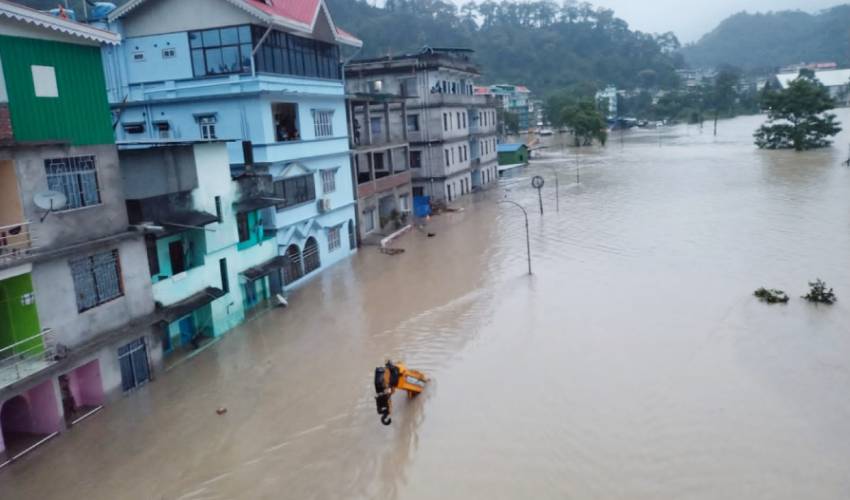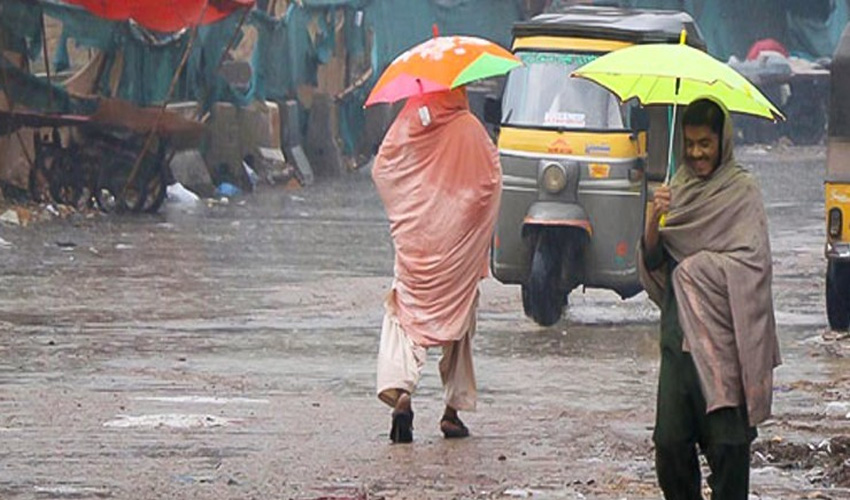Tragedy struck on October 4 when heavy rains caused Lhonak Lake in Sikkim state in Northeast India to overflow. This disaster is the worst in the region in more than 50 years and has claimed the lives of at least 18 people and left nearly 100 missing.
The catastrophe resulted from a massive amount of rain which experts link to climate change in the South Asian mountains.
In just the first five days of October, Sikkim received a whopping 101 mm (about 4 inches) of rain, double the usual amount. Lhonak Lake in Sikkim state overflowed on Wednesday. As many as 22,000 people were displaced amid widespread flooding.
The weather department predicts more heavy rain over the next three days in parts of Sikkim and nearby areas.
The recent flooding crisis was worsened by the release of water from the Teesta V dam, operated by the state-run NHPC. Surprisingly, four of the dam's gates were washed away, and it remains unclear why they were not opened in time.
As of Thursday evening, 98 people were reported missing, including 17 army personnel.
Fourteen bridges were washed away, making rescue efforts even more challenging due to heavy rainfall.
In response, 18 relief camps were set up to provide food and medical help to those affected.
Additionally, authorities in Bangladesh are on high alert, as they expect the Teesta River's water level to rise downstream of Sikkim. This poses a risk of flooding in five districts in northern Bangladesh.
Prabhakar Rai, director of Sikkim's State Disaster Management Authority, described the situation as "slightly grim" due to bad weather conditions.
Communication and transportation were severely affected, with roads damaged and telephone service disrupted.
Around 2,500 tourists found themselves stranded in and around Chungthang town in Mangan district, about 100 km (60 miles) north of the state capital Gangtok.
While they are safe, their evacuation will depend on improving weather conditions.
In response to the disaster, the state tourism department advised visitors to postpone their travel plans to Sikkim.
They assured that stranded individuals in Mangan district would be evacuated once weather conditions improved.
Video footage showed floodwaters engulfing built-up areas, causing houses to collapse.
Army bases and other facilities were damaged, and vehicles were submerged.
The Army establishment particularly the food/fuel depot), Mechanical section the workshop of the Border Road Organization (BRO), the energy and power complex, industry department complex, fire & Police station and network communication: A local told ANI #Sikkim #sikkimfloods pic.twitter.com/LVR1T2pKVF
— Vishu Adhana (@Vishu_Adhana_) October 5, 2023
Satellite images indicated that nearly two-thirds of the lake had drained due to the catastrophe.
Pics: Damage caused by flash floods in #Sikkim
— NDTV (@ndtv) October 4, 2023
📸: ANI pic.twitter.com/onKgqycOyc
Sikkim, a small Buddhist state situated between Nepal, Bhutan, and China, was cut off from neighbouring West Bengal because the primary highway had collapsed. While fuel shortages were reported in the state capital Gangtok, food supplies remained available.
The incident was triggered by a cloudburst on Lhonak Lake, approximately 150 km (90 miles) north of Gangtok near the China border. Cloudbursts cause sudden, intense rainfall over a short period, resulting in flash floods downstream in the Teesta valley.
In recent years, the Indian Himalayas have experienced heavy rains which have led to deadly landslides and flash floods, claiming over 500 lives this year alone.
Scientists increasingly attribute these events to global warming while underscoring the urgent need for climate action.



























